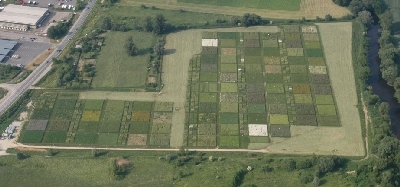The Jena Experiment
The external pageJena Experimentcall_made is a large scale long-term field biodiversity experiment which involves collaboration between ten research institutions in Germany and Switzerland, coordinated by the external pageUniversity of Jenacall_made and the external pageMax-Planck-Institute for Biogeochemistry, Jenacall_made.
Our group's collaboration to this large scale long-term field biodiversity experiment focuses mainly on:
- mechanisms behind overall diversity effects by studying individual plant species and plant functional types
- the effect of management and diversity on productivity and forage quality
- soil trace gas fluxes
- plant source water
- plant-microbial competition for soil aminoacids
- interactive effects of biodiversity, climate change and management on biogeochemistry
- controls of plant biodiversity on water flux partitioning

Past projects of our group
- Complementary plant water and light use along a diversity gradient (Dörte Bachmann, Nina Buchmann)
- Biodiversity and management effects on trace gas fluxes (Traceman). (Pascal Niklaus, Romain Barnard, Michael Scherer-Lorenzen, Nina Buchmann)
- Controls of plant biodiversity on water flux partitioning in grassland ecosystems (DIVE_WATER). (Romain Barnard, Marc-André Allers)
- Intra-annual stability of spatial and temporal niche complementary along a diversity gradient in temperate grasslands. (Thomas Lanners, Petra D'Odorico)
- Synthesis (Nina Buchmann)
Publications
Check the Jena Experiment's publication list.
Experimental design
For details of the experimental design, see external pageRoscher et al. 2004call_made.
A total of 405 grassland communities were established from seed on a 9 ha site in Jena, Germany, differing in plant species richness, composition and number of functional groups (grasses, legumes, large herbs, small herbs).
The species assemblages serve as basis to study interactions not only among plant individuals and plant species, but also among different trophic levels. Our emphasis is on ecosystem aboveground productivity, ecophysiology and population biology of individual species, and the turnover of nutrients.
